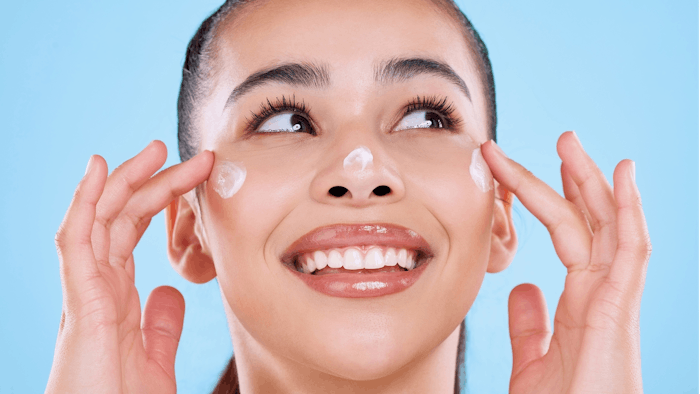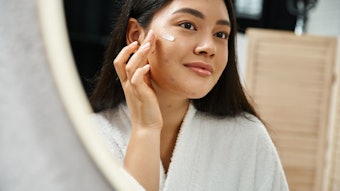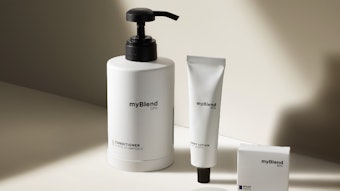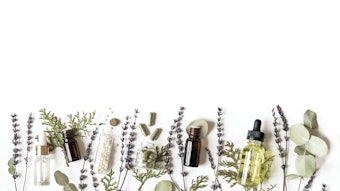
TikTok has become the hub of many of the skin care trends that we have seen in 2022, but one of TikTok's trends is predicted to continue to take off in 2023. Skin cycling has been buzzing around the spa and skin care industries, with many consumers turning to it and loving the results. We are going to dive deep into what skin cycling is, if your clients should try it and how you can introduce the trend into your spa and treatments.
Related: TikTok Trend: Get the Jello Skin Glow
What is Skin Cycling?
Skin cycling is a four-part, nighttime skin care routine, that has mainly been boasted for its ability to help even skin texture and clear breakouts. Dr. Whitney Bowe, a dermatologist, is credited for introducing this trend to TikTok, but many skin care enthusiasts helped it take off on the app.
The four-day routine incorporates active ingredients into recovery skin care days during the nighttime skin care routine. The morning routine for your clients would stay the same, albeit an SPF is an essential addition when practicing this trend if it is not already incorporated into their morning routine. This routine can also be brought down the neck and chest.
The entire skin cycling trend stemmed from Dr. Bowe looking to create a strategic routine that implemented the benefits of using exfoliants and retinol while preventing inflammation and irritation.1 She also had a goal to simplify her patient's skin care routines and streamline the skin care process. The concept behind skin cycling is to balance these two effective ingredients to lessen irritation by alternating them in clients' skin care routines and providing two nights of recovery.
However, you may be noticing that while this is a trend of the times, this is something the professional industry has been practicing for decades, as Shannone Esau, CEO and national educator of Rhonda Allison, shared. "Many spa professionals offer aspects of cycling in a regimen that includes products that are to be used once a week, every other night or even every third night."
Related: Tik Tok Trend: Banana Peel Skin Care
Skin Cycling Benefits
Much like the retinol sandwiching trend, one benefit of this skin care trend is to lessen irritation for clients who, up until this point, were not using active ingredients like retinol and exfoliants into their routine. This trend allows the skin time to absorb the ingredients while also having a healing process to keep it from getting irritated.
"From a skin physiology standpoint, skin cycling is beneficial to follow on a regular basis. Inflammation is a trigger for many skin concerns, and when the skin is subjected to excessive trauma, clients can exacerbate the condition you are treating and make matters worse," explained Amber Yeargin, education manager of PCA Skin.
Another big benefit of skin cycling is that it can give your clients a home care routine that keeps them from getting overexcited about trying new skin care, over exfoliating, and in short, causing more damage to their skin barrier.2 This routine can provide a structured home care routine for them to follow to amplify their treatment benefits and their overall skin health.
"It is beneficial to alternate your exfoliaton and retinol treatments with products to soothe and calm the skin in order to keep inflammation at a minimum," Yeargin states.
This trend is also great for acne-prone clients or those who have dull and pigmented skin, but it is not limited to this specific clientele. Clients will most likely see improvements in their acne, if they have any, hyperpigmentation, skin texture and pore size.
Related: Trending: Why Consumers Are Loving Skin Purging
How to Practice Skin Cycling
To practice skin cycling, your clients will need:
- Chemical exfoliator (salicylic or glycolic)
- Retinoid
- Moisturizer
The routine that clients will follow to practice skin cycling would be:
- Night 1: Exfoliate
- Night 2: Retinol
- Night 3 & 4: Recovery
- Repeat
If these steps are properly followed, Dr. Bowe shares that results should be seen in roughly two skin cycles or eight days. Let's dive a little deeper into the purpose behind each one.
Night 1: Exfoliate
It is important to note that Dr. Bowe recommends a chemical exfoliant (like an AHA or BHA), not a physical exfoliant. The reason behind this is because chemical exfoliants prep the skin to get the most out of the retinoid that will be used on night two.3 This step is designed to only be followed up with a moisturizer, and it is not recommended to do any kind of skin slugging after using the chemical exfoliant.
Related: TikTok Trend: Snail Mucin
Night 2: Retinol
After cleansing on the second night, clients should apply a small amount of retinol. If clients have sensitive skin, they can practice the retinol sandwich method on this day of their skin cycling journey, especially in areas like around the eyes, the corners of the nose and mouth and the neck.
Night 3 & 4: Recovery
The recovery night is exactly what it sounds like. This is the time to give the skin a chance to recover from the chemical exfoliation and active ingredients that were just used on it. It is key in this step for clients to not use any active ingredients or exfoliants in their routine. These nights should focus on nourishing the skin microbiome and repairing the barrier.
Related: Tik Tok Data Reports: Retinol and Retro Brand Resurgance
Skin Cycling in the Spa
One major way to bring skin cycling into your spa is to educate your clients on it, and why it may or may not work for their skin. Believe it or not, skin cycling is not for everyone. This may not be the best method of home care if you are with a client and currently working on an active routine for clearing up their acne-prone skin. If you already have a method of home care in place for the acne treatments you are performing on them, it is best not to switch up this routine even though skin cycling can be good for acneic skin. Skin cycling should also be avoided for clients who are hypersensitive, or any of your clients prone to allergies or rashes.4
But, if your client checks all of the boxes on being a good candidate for this trend, you can absolutely benefit in your retail space by recommending it. Esau shares how you can promote specific masks and enzymes in your retail space for them to incorporate into their skin cycling journey. She also emphasized how you can promote specific products for seasonal changes into their regimen as well.
Related: Trending: Consumer's Demand for Self-Care on the Rise
Another way to boost your retail sales with this skin care trend could be through "creating skin cycling product bundles at a special promotional price to incentivize your clients to purchase the entire system," says Yeargin.
Apart from retail, this trend can also be utilized in the spa treatment room itself. "One idea would be to do monthly treatment plans and change it up from a facial to a light peel each time. Also including modalities can be a beneficial change up," says Esau.
Yeargin recommends another way to bring skin cycling into the treatment room would be to recommend professional exfoliation and retinol peels to your clients to maximize their skin cycling results.
Whether it's in your retail space or your treatment area, there are plenty of opportunities to maximize on this trend that we predict will continue to be a hot topic for consumers in 2023. Like Esau stated, this is something that many professionals have been doing and recommending for years, but now that it's trendy make sure you are using the term "skin cycling" when making these types of recommendations to your clients to really capture their attention.
References:












